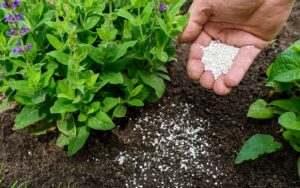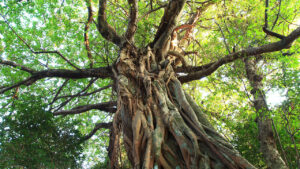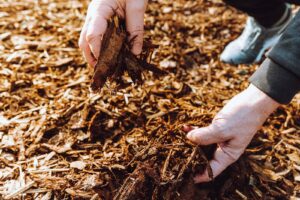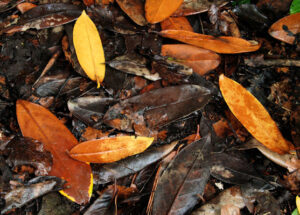Colorful Plants To Brighten Up Your Landscape
When you look out at your yard, does it feel like something’s missing? Perhaps what your landscape needs is a vibrant splash of color to transform it from mundane to magnificent. Whether you’re a seasoned gardener or just beginning your journey into landscaping, incorporating colorful plants into your outdoor space can dramatically enhance its appeal and create a welcoming atmosphere that reflects your personality.
In this comprehensive guide, we’ll explore the world of colorful landscaping plants, from perennial favorites to seasonal showstoppers, and provide you with everything you need to know to create your own color-rich outdoor oasis. Along the way, we’ll share expert tips on selecting the right plants for your specific climate, designing with color in mind, and maintaining your vibrant landscape throughout the changing seasons.
Understanding Plant Hardiness and Your Climate
Before you rush out to purchase the brightest flowers you can find, it’s essential to understand which plants will thrive in your specific region. The USDA Plant Hardiness Zone Map divides North America into 13 zones based on average annual minimum winter temperatures. This critical tool helps you determine which plants are likely to succeed in your area.
According to the USDA Agricultural Research Service, knowing your hardiness zone is the first step in selecting appropriate plants for your landscape. You can find your zone by entering your ZIP code on their official website. Once you know your zone, you can make informed choices about which colorful plants will survive and thrive in your local climate.
Heat Tolerance and Sun Exposure
Beyond hardiness zones, you’ll need to consider the heat tolerance of plants and the amount of sunlight your landscape receives. Some colorful plants thrive in full, direct sunlight, while others prefer partial shade or even full shade. Understanding these requirements will help ensure your plants not only survive but flourish in your landscape.
The following table outlines common light exposure definitions to help you match plants to the right locations in your yard:
| Light Condition | Definition | Daily Sun Exposure |
|---|---|---|
| Full Sun | Direct sunlight unfiltered by trees or structures | 6+ hours of direct sun |
| Partial Sun | Some direct sun, but protected during the hottest part of the day | 4-6 hours of direct sun |
| Partial Shade | Filtered light through tree branches or receives morning sun only | 2-4 hours of direct sun |
| Full Shade | No direct sunlight, but bright ambient light | Less than 2 hours of direct sun |
| Deep Shade | Little to no direct or ambient light | Almost no direct sunlight |
Perennial Powerhouses: Long-lasting Color for Years to Come
Perennial plants return year after year, making them excellent investments for your landscape. These reliable bloomers establish strong root systems over time, often becoming more impressive with each passing season. Here are some spectacular perennial options to introduce long-lasting color to your outdoor space.
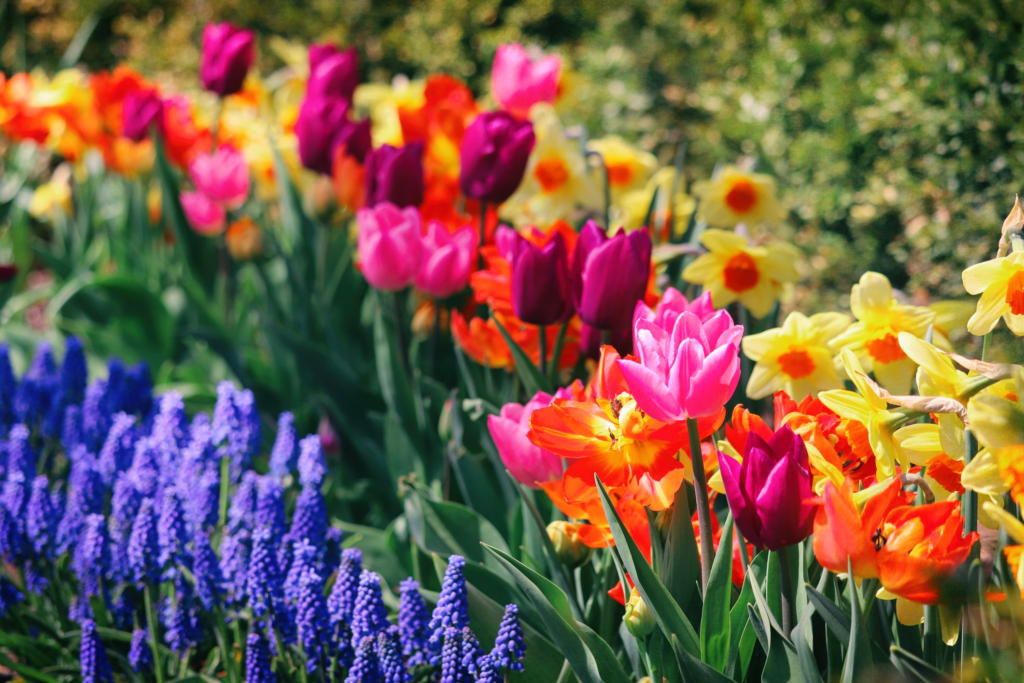
Bold and Beautiful Perennials for Sunny Spots
If your landscape enjoys abundant sunshine, you’re in luck! Some of the most vibrant perennials thrive in full sun conditions. These colorful powerhouses will transform sunny areas into eye-catching focal points that draw admiration from neighbors and passersby.
Coneflowers (Echinacea): These native American wildflowers have experienced a renaissance in recent years, with new cultivars offering an expanded palette of colors from traditional purple to vibrant orange, yellow, white, and even green. Reaching heights of 2-4 feet, coneflowers bloom from midsummer through fall and attract beneficial pollinators like butterflies and bees. Their distinctive cone-shaped centers add interesting texture to the landscape even after the petals have faded.
Black-eyed Susans (Rudbeckia): With their cheerful golden-yellow petals and distinctive dark centers, black-eyed Susans bring a sunny disposition to any landscape. These hardy natives bloom prolifically from midsummer through fall, reaching heights of 2-3 feet. They’re remarkably drought-tolerant once established and self-seed readily, creating natural drifts of color over time.
Salvias (Sage): Available in a stunning array of colors from deep blues and purples to bright reds and pinks, salvias offer vertical interest with their spiky flower stalks. Many varieties bloom from early summer right through the first frost, providing extended color. As a bonus, deer and rabbits typically avoid salvias due to their aromatic foliage, making them excellent choices for problem areas.
Daylilies (Hemerocallis): Often called the “perfect perennial,” daylilies earn their reputation through incredible hardiness, drought tolerance, and adaptability to various soil conditions. Modern hybrids come in nearly every color imaginable except true blue, with flower forms ranging from simple to ruffled and doubled. Though individual blooms last just one day (hence the name), established plants produce numerous flower stalks over an extended season.
Shade-Loving Perennials with Vivid Color
If your landscape includes shaded areas beneath trees or on the north side of structures, don’t despair. Many colorful perennials thrive in partial to full shade, bringing vibrant life to otherwise difficult growing conditions.
Coral Bells (Heuchera): Prized for their colorful foliage rather than their flowers, modern heuchera varieties offer leaves in stunning shades of purple, red, orange, lime green, and nearly black. These compact plants form tidy mounds 8-12 inches high and produce delicate flower spikes that attract hummingbirds. Their evergreen or semi-evergreen nature in many regions provides year-round color.
Astilbe: With feathery plumes rising above fern-like foliage, astilbes add both color and texture to shady spots. Available in shades of pink, red, lavender, and white, these reliable perennials bloom in late spring to early summer. They prefer consistently moist soil, making them perfect companions for areas near downspouts or in rain gardens.
Japanese Forest Grass (Hakonechloa macra): This ornamental grass brings movement and color to shaded areas with its arching, cascading form. The variety ‘Aureola’ features bright gold leaves with green stripes that seem to glow in dim light, while ‘All Gold’ offers solid chartreuse foliage. In fall, the leaves take on impressive reddish-orange tints before going dormant for winter.
Lungwort (Pulmonaria): Offering the rare combination of beautiful flowers and decorative foliage, lungworts feature blue, pink, or white blossoms in early spring atop leaves often spotted or mottled with silver. These low-growing perennials (8-12 inches tall) spread slowly to form attractive groundcovers in shaded areas.
Annual Color Explosions: Maximum Impact for Seasonal Wow
While perennials offer long-term value, annual plants deliver unmatched color intensity during their single growing season. Because they complete their entire life cycle in one year, annuals typically bloom more prolifically than perennials, creating spectacular seasonal displays. Here’s how to incorporate these color powerhouses into your landscape.
Sun-Loving Annuals for Blazing Color
The following annuals thrive in full sun locations and provide incredible color saturation throughout the growing season:
Zinnias: Available in nearly every color except blue, zinnias offer enormous variety in both height (from 6-inch dwarfs to 4-foot giants) and flower form (from simple daisies to complex cactus-flowered types). These heat-loving plants bloom continuously from early summer until frost if deadheaded regularly. As an added benefit, they make excellent cut flowers and attract butterflies in abundance.
Petunias: Modern petunia varieties have overcome many of the problems that plagued their ancestors, offering improved weather resistance and self-cleaning habits. Wave® and Supertunia® series provide cascading growth perfect for containers and hanging baskets, while more upright forms work beautifully in borders. Colors range from pure white to nearly black, with every shade in between, including bicolors, stripes, and starry patterns.
Lantana: With clusters of tiny flowers in combinations of yellow, orange, red, pink, and purple, lantana creates a kaleidoscope effect in the landscape. These heat and drought-tolerant plants attract butterflies by the dozens while repelling deer with their aromatic foliage. Though perennial in zones 9-11, lantana is widely used as a colorful annual in cooler regions.
Celosia: For truly unusual color and texture, few annuals can match celosia. Plume types feature fluffy, feather-like flower heads, while crested types (often called cockscomb) produce fascinating brain-like formations. Colors include brilliant reds, oranges, yellows, and pinks that retain their vibrancy even when dried.
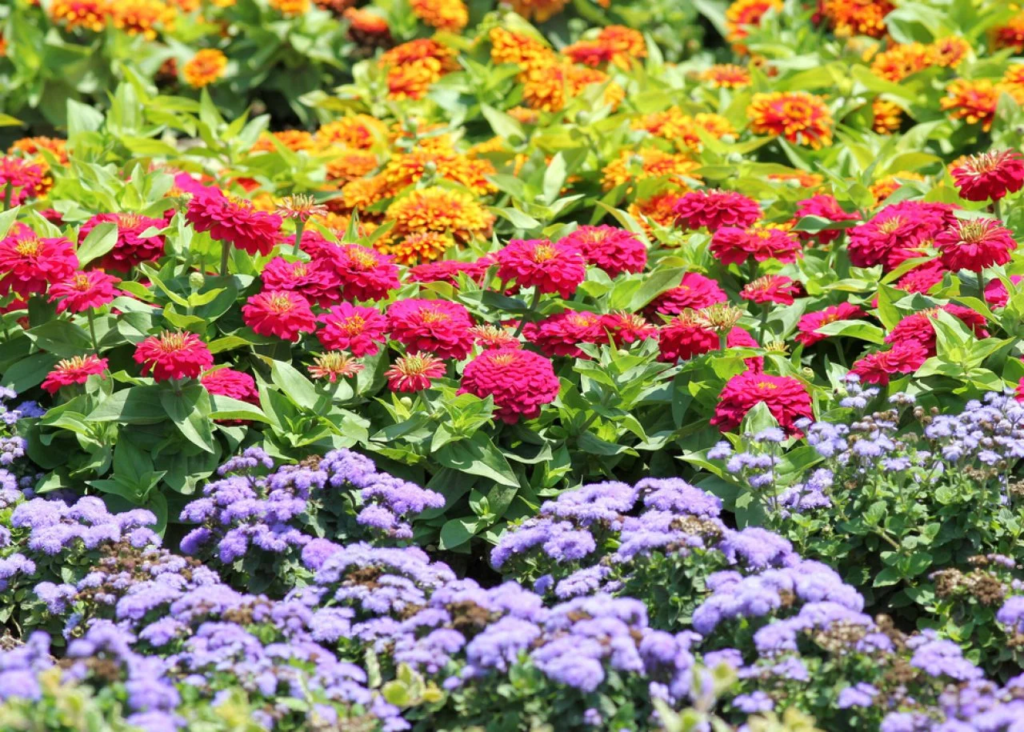
Shade-Tolerant Annuals for Colorful Retreats
Bring vibrant color to shaded areas with these shade-tolerant annual options:
Impatiens: Traditional impatiens (Impatiens walleriana) have long been the go-to annual for shaded landscapes, offering non-stop blooms in white, pink, red, orange, and lavender. While downy mildew disease has affected these plants in some regions, new resistant varieties are becoming available. Meanwhile, New Guinea impatiens provide an excellent alternative with larger flowers and greater sun tolerance.
Begonias: Wax begonias offer continuous color from spring until frost, with varieties featuring green or bronze foliage topped with flowers in white, pink, or red. For more dramatic impact, tuberous begonias produce rose-like blooms in a broader color range, while angel wing begonias combine attractive spotted foliage with dangling flower clusters.
Coleus: Grown primarily for its vividly colored foliage, modern coleus varieties offer an incredible diversity of patterns and color combinations. From subtle burgundy to electric lime, often with contrasting edges or veining, coleus provides reliable color even in deep shade. Sun-tolerant varieties have also been developed for more versatile use in the landscape.
Torenia (Wishbone Flower): These charming annuals produce abundant trumpet-shaped blooms in purple, blue, pink, or white, often with contrasting throats. Reaching just 6-12 inches in height, torenia works beautifully in containers or as a front-of-border plant in shaded beds.
Shrubs and Trees with Spectacular Color
For more permanent landscape structure with colorful impact, consider incorporating trees and shrubs with vibrant features. These woody plants provide multi-season interest through flowers, foliage, berries, and even bark.
Flowering Shrubs for Long-Lasting Color
Hydrangeas: Few shrubs offer the color impact of hydrangeas, with their massive flower heads in shades of blue, purple, pink, white, or green. Bigleaf hydrangeas (Hydrangea macrophylla) can even change color based on soil pH, with acidic soil producing blue flowers and alkaline soil yielding pink blooms. Newer reblooming varieties like the Endless Summer® series have revolutionized hydrangea culture by flowering on both old and new wood, extending the bloom season substantially.
Azaleas and Rhododendrons: These classic landscape shrubs explode with color in spring, creating breathtaking displays in shades ranging from white and pale pink to vibrant orange and deep purple. Encore® azaleas have expanded the traditional spring bloom season by offering repeat flowering in summer and fall. Both plants prefer acidic soil and partial shade in most regions.
Butterfly Bush (Buddleia): Living up to its name, butterfly bush attracts scores of butterflies with its fragrant, nectar-rich flower panicles. Traditional varieties can reach 8-10 feet tall, though compact cultivars are now available for smaller spaces. Colors include white, pink, purple, and near-red, with flowers appearing from midsummer through fall. Look for seedless varieties that avoid invasive tendencies.
Rose of Sharon (Hibiscus syriacus): This tough, heat-tolerant shrub produces hollyhock-like flowers in late summer when many other plants have finished blooming. Colors include white, pink, red, lavender, and blue, often with contrasting throats. Modern cultivars offer improved flower form, more compact growth habits, and sterile flowers that won’t self-seed.
Trees with Colorful Features
Japanese Maple (Acer palmatum): Prized for their exquisite foliage in shades of red, purple, orange, or gold, Japanese maples create focal points in any landscape. Leaf shapes vary from deeply dissected (laceleaf types) to broad palmate forms, all offering spectacular fall color as a final seasonal display. Most prefer partial shade in hot climates but tolerate more sun in northern regions.
Eastern Redbud (Cercis canadensis): This native American tree produces a spectacular show of purple-pink flowers that emerge directly from the branches in early spring, often before the heart-shaped leaves appear. Cultivars like ‘Forest Pansy’ offer additional interest with purple-red summer foliage, while ‘Hearts of Gold’ features golden leaves that mature to chartreuse.
Flowering Dogwood (Cornus florida): Whether you choose the native white-flowered form or pink cultivars, flowering dogwoods offer multiseason appeal. Spring brings four-petaled (actually bracts) flowers, summer features attractive green foliage, fall delivers reddish-purple color, and winter showcases interesting branch structure and textured bark.
Crabapples (Malus): Modern disease-resistant crabapple varieties combine spring flowers in white, pink, or red with persistent small fruits that provide winter color and attract birds. Many cultivars also offer attractive foliage, from deep purple to bronze or gold, enhancing their year-round landscape value.
Designing with Color: Creating Cohesive and Impactful Landscapes
Now that you’re familiar with many colorful plant options, let’s explore how to combine them effectively in your landscape design. Understanding basic color theory and plant combination strategies will help you create gardens that are both visually striking and harmoniously balanced.
Color Theory Basics for Landscape Design
Colors can be broadly categorized into warm tones (reds, oranges, yellows) and cool tones (blues, purples, greens). Warm colors tend to advance visually, making them appear closer than they actually are, while cool colors recede, creating an illusion of distance. You can use this optical effect to your advantage, placing warm colors in areas you want to highlight and cool colors where you’d like to create a sense of depth.
The color wheel provides several classic combination strategies:
Complementary Schemes: Colors opposite each other on the color wheel (like purple and yellow or blue and orange) create dynamic contrast when used together. This high-energy approach works well for attention-grabbing beds near entryways or viewed from a distance.
Analogous Schemes: Colors adjacent on the color wheel (such as blue, blue-purple, and purple) create harmonious, soothing combinations with less tension than complementary schemes. This approach works beautifully in relaxation areas like patios and meditation gardens.
Monochromatic Schemes: Variations of a single color, from light to dark (like pale pink through deep rose), create sophisticated, elegant designs. Using different textures and forms becomes especially important in monochromatic gardens to maintain visual interest.
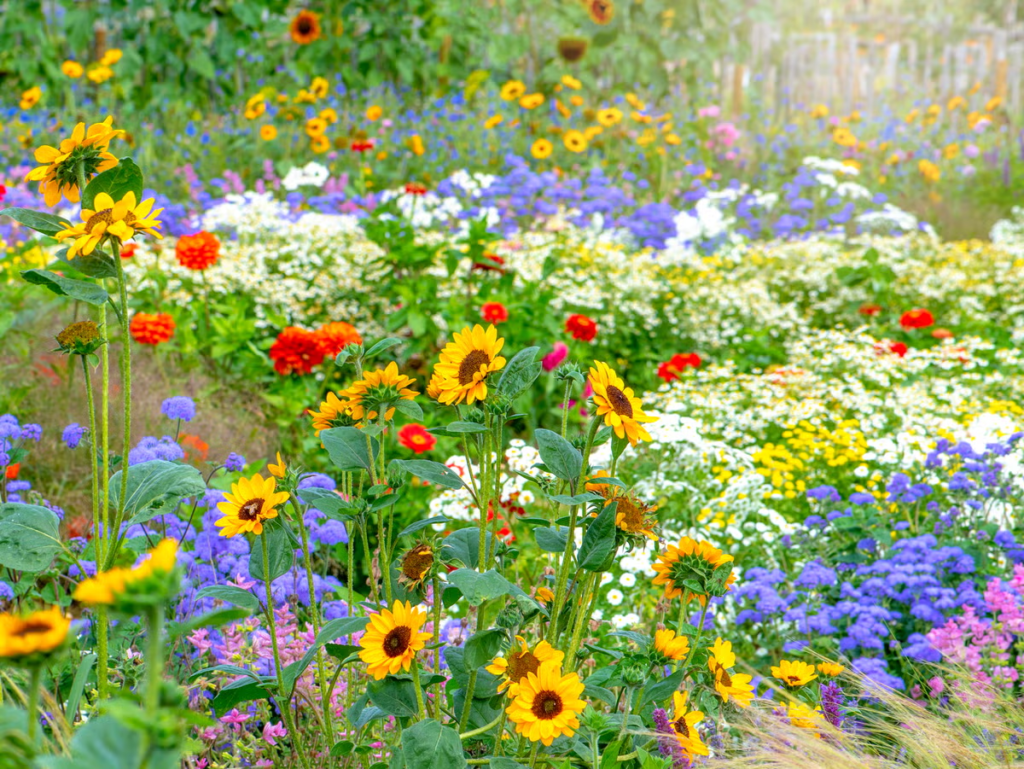
Plant Combinations for Maximum Impact
The following table offers ready-to-use color combinations with specific plant suggestions for different light conditions:
| Color Scheme | Full Sun Plants | Partial Shade Plants | Design Effect |
|---|---|---|---|
| Purple & Yellow | Purple Salvia, Yellow Coreopsis, Lavender, Black-eyed Susan | Purple Coleus, Yellow Corydalis, Heuchera ‘Plum Pudding’, Golden Hakone Grass | High-contrast, energetic |
| Blue & Orange | Blue Delphinium, Orange Calendula, Blue Fescue, Zinnia ‘Profusion Orange’ | Blue Hydrangea, Orange Impatiens, Hosta ‘Blue Angel’, Begonia ‘Apricot’ | Bold, complementary |
| Pink & Silver | Pink Echinacea, Silver Artemisia, Sedum ‘Autumn Joy’, Lamb’s Ears | Pink Astilbe, Silver Heuchera, Dicentra ‘Luxuriant’, Japanese Painted Fern | Romantic, sophisticated |
| Red & Green | Red Snapdragons, Lime Nicotiana, Penstemon ‘Firebird’, Euphobia ‘Diamond Frost’ | Red Begonia, Lime Coleus, Caladium ‘Red Flash’, Hosta ‘Guacamole’ | Holiday-inspired, vibrant |
| White & Blue | White Cosmos, Blue Salvia, Dusty Miller, Delphinium | White Astilbe, Blue Brunnera, Variegated Hosta, Dwarf Bleeding Heart | Cool, calming |
Creating Color Through the Seasons
One of the biggest challenges in landscape design is maintaining color interest throughout the growing season. By carefully selecting plants with different bloom times, you can ensure your landscape never lacks color from spring through fall.
For spring color, incorporate bulbs like tulips, daffodils, and hyacinths, along with early-flowering perennials such as bleeding heart and creeping phlox. As these fade, summer bloomers like coneflowers, daylilies, and salvias take center stage. Late-season stars including asters, sedums, and ornamental grasses extend the color show well into fall, when many trees and shrubs contribute their own spectacular autumn foliage.
The USDA National Agricultural Library offers resources on seasonal planting guides specific to different regions of the United States. Consulting these resources can help you develop a planting strategy tailored to your local climate conditions.
Maintenance Tips for Colorful Landscapes
Keeping your colorful landscape looking its best requires regular maintenance throughout the growing season. Here are some essential care practices to ensure your plants continue to provide maximum visual impact:
Deadheading and Pruning
Removing spent flowers (deadheading) encourages many plants to produce new blooms rather than setting seed. For perennials with multiple flower stalks, like daylilies and salvias, remove individual spent blooms or cut back entire stalks once they’ve finished flowering. Annuals like petunias and zinnias will bloom continuously if deadheaded regularly.
Pruning flowering shrubs at the appropriate time is crucial for maximum bloom. Spring-flowering shrubs like azaleas and forsythia form their flower buds during the previous growing season, so prune them immediately after flowering. Summer-flowering shrubs like butterfly bush and rose of Sharon bloom on new growth, so prune them in late winter or early spring before growth begins.
Fertilizing for Optimal Color
Most flowering plants benefit from regular fertilization to support vigorous growth and abundant blooms. However, excessive nitrogen can promote leafy growth at the expense of flowers, so choose fertilizers formulated specifically for flowering plants, with higher phosphorus (the middle number in the N-P-K ratio) to encourage bloom production.
Slow-release granular fertilizers applied according to package directions provide steady nutrition throughout the growing season. For containers and hanging baskets, which require more frequent watering, supplement with liquid fertilizer diluted to half-strength every two weeks during active growth.
Water Management
Proper watering is essential for maintaining plant health and color intensity. Most established perennials, trees, and shrubs prefer deep, infrequent watering that encourages deep root development. Apply water at the base of plants rather than overhead to prevent foliar diseases and keep flowers looking their best.
Annuals and newly planted perennials require more frequent watering until their root systems develop. Container plantings may need daily watering during hot weather, sometimes twice daily for hanging baskets exposed to wind and sun. Consider installing drip irrigation or soaker hoses to deliver water efficiently exactly where it’s needed.

Mulching for Success
A 2-3 inch layer of organic mulch around your colorful plants offers multiple benefits: conserving soil moisture, suppressing weeds that compete for nutrients, moderating soil temperature, and preventing soil splash that can spread disease. As organic mulches break down over time, they also improve soil structure and fertility.
Choose mulch appropriate for your plants and aesthetic preferences. Shredded hardwood or pine straw works well for most landscape beds, while cocoa hulls offer rich color and pleasant scent (though toxic to pets). Avoid piling mulch against plant stems or tree trunks, which can promote rot and disease.
Conclusion: Your Personal Paradise of Color
Creating a colorful landscape is both an art and a science, blending aesthetic preferences with horticultural knowledge. By choosing plants well-suited to your growing conditions, combining colors thoughtfully, and providing appropriate care, you can transform your outdoor space into a vibrant paradise that brings joy throughout the seasons.
Remember that landscaping is an evolving process, not a one-time project. As you gain experience and confidence, don’t be afraid to experiment with new plant combinations, adjust your design as plants mature, and continue adding splashes of color to your personal outdoor retreat. Your landscape should ultimately reflect your personality and provide a space where you feel both energized and at peace.
For more information on selecting plants native to your specific region, visit the USDA PLANTS Database, which offers comprehensive information on native and naturalized plants throughout the United States and its territories. Native plants not only provide beautiful color but also support local pollinators and wildlife while typically requiring less maintenance once established.
With this guide as your starting point, you’re well-equipped to begin your colorful landscaping journey. Whether you start small with a single vibrant border or embark on a complete yard transformation, the rewards of a color-rich landscape will continue to unfold season after season, year after year.



